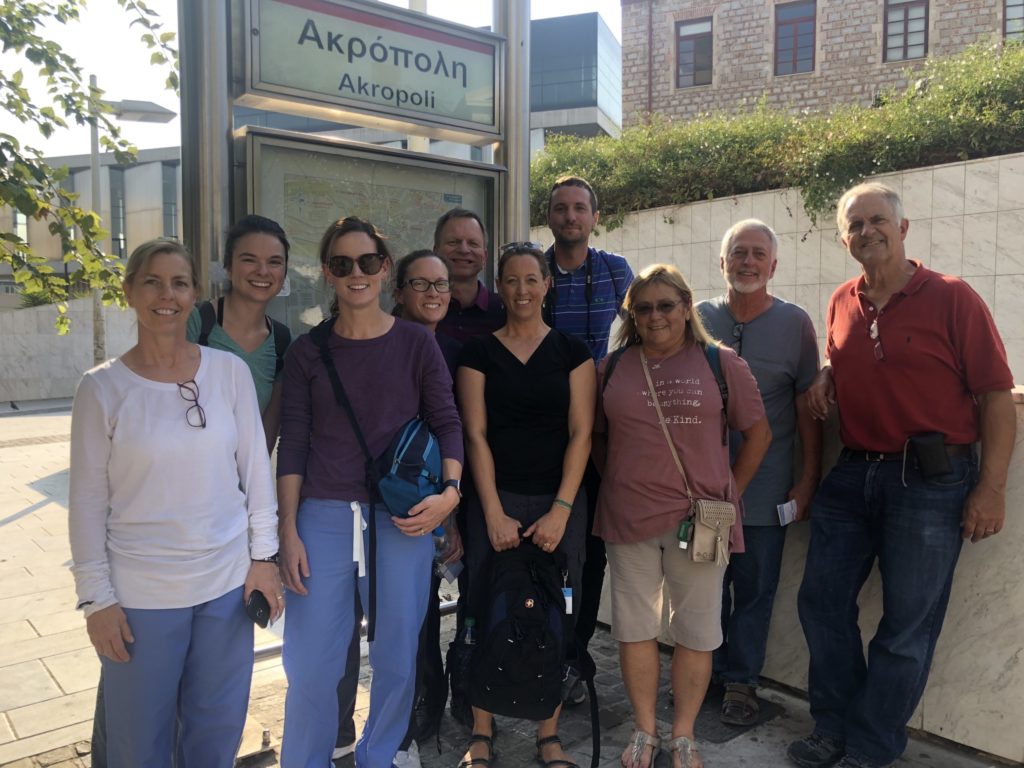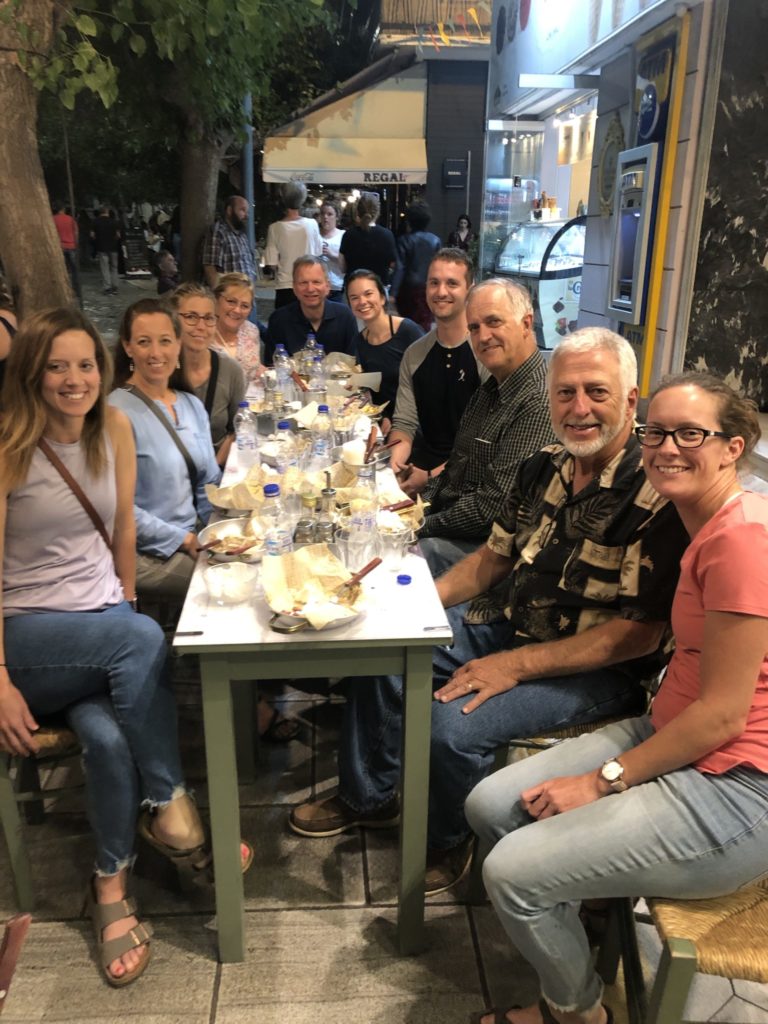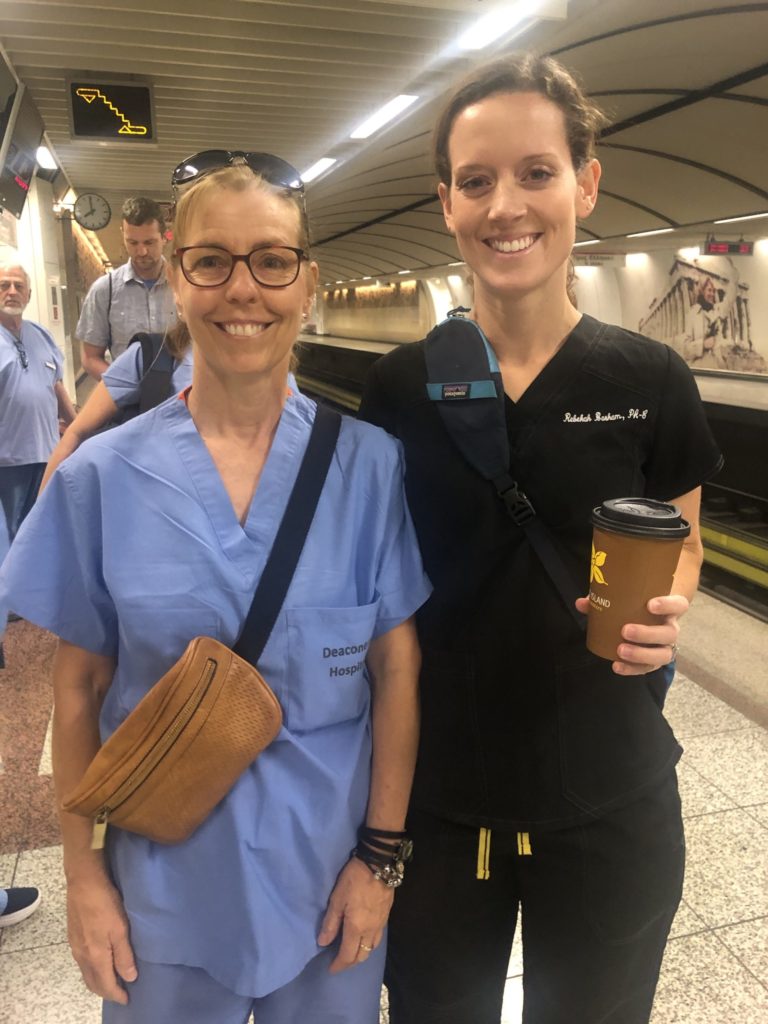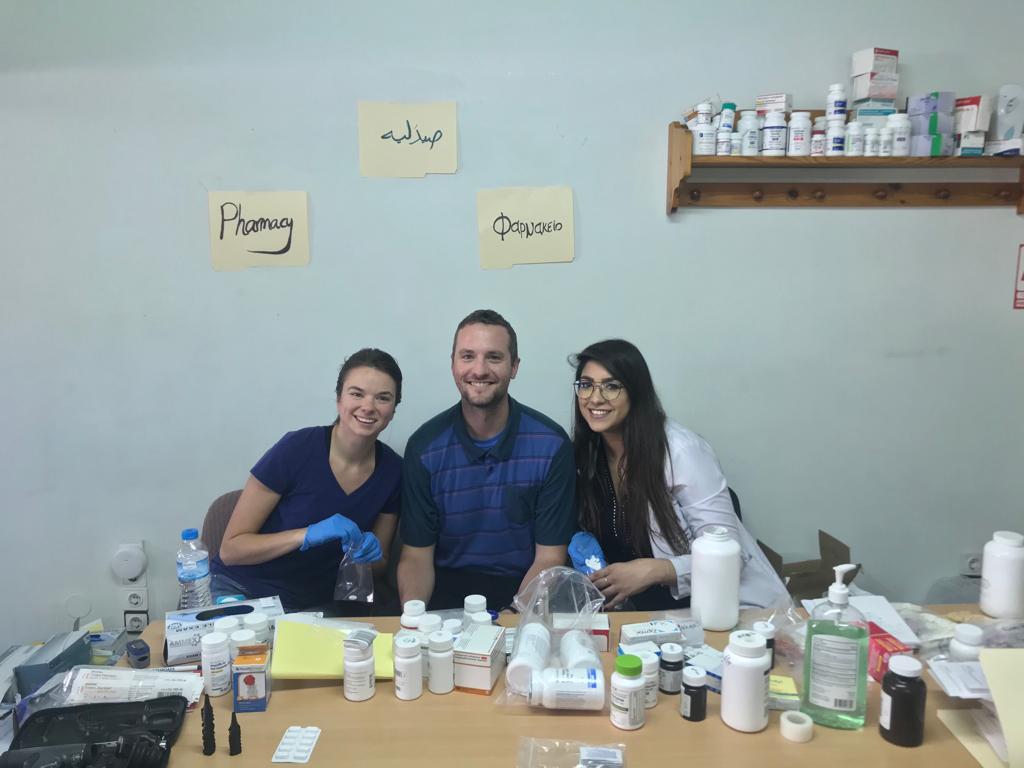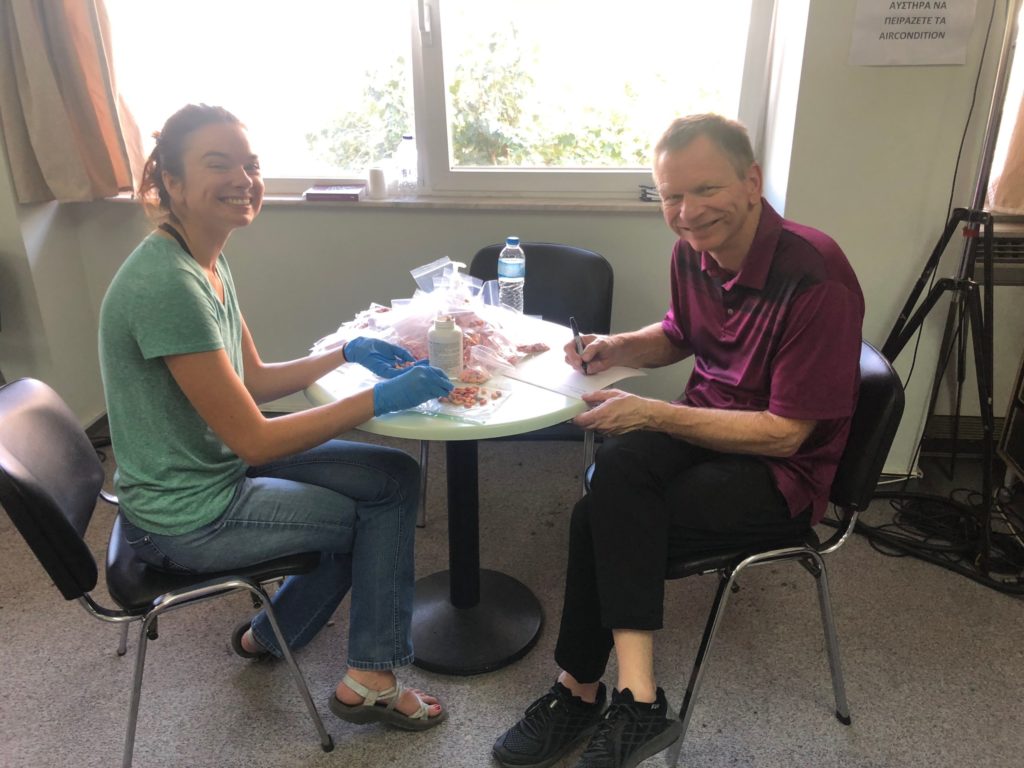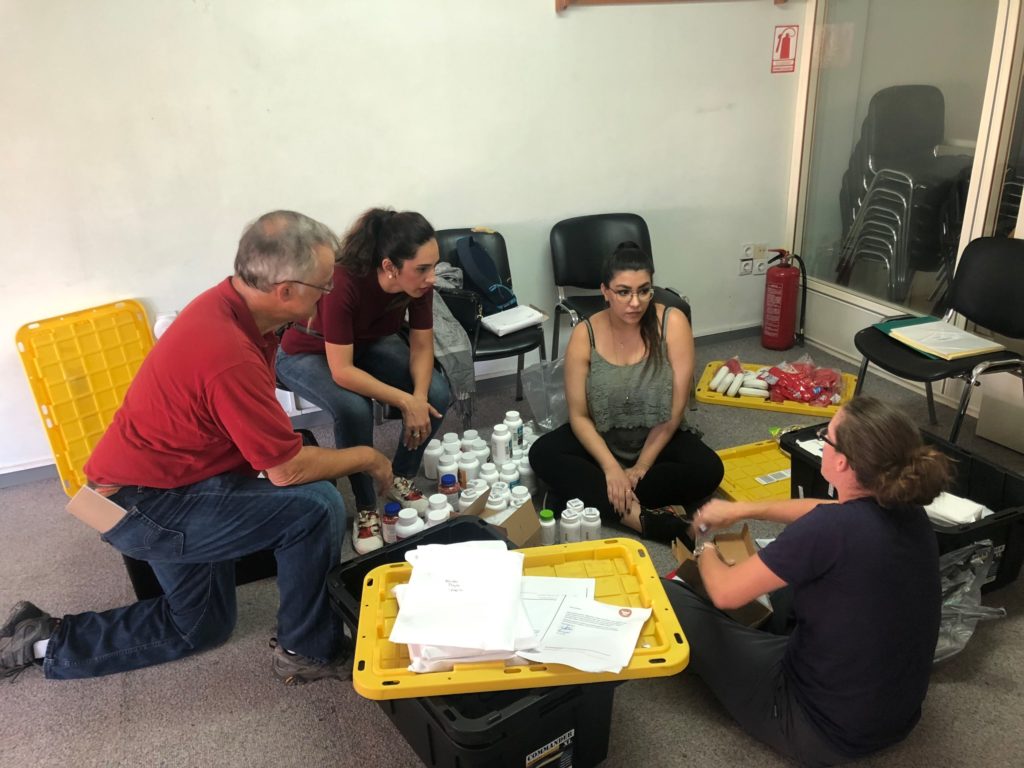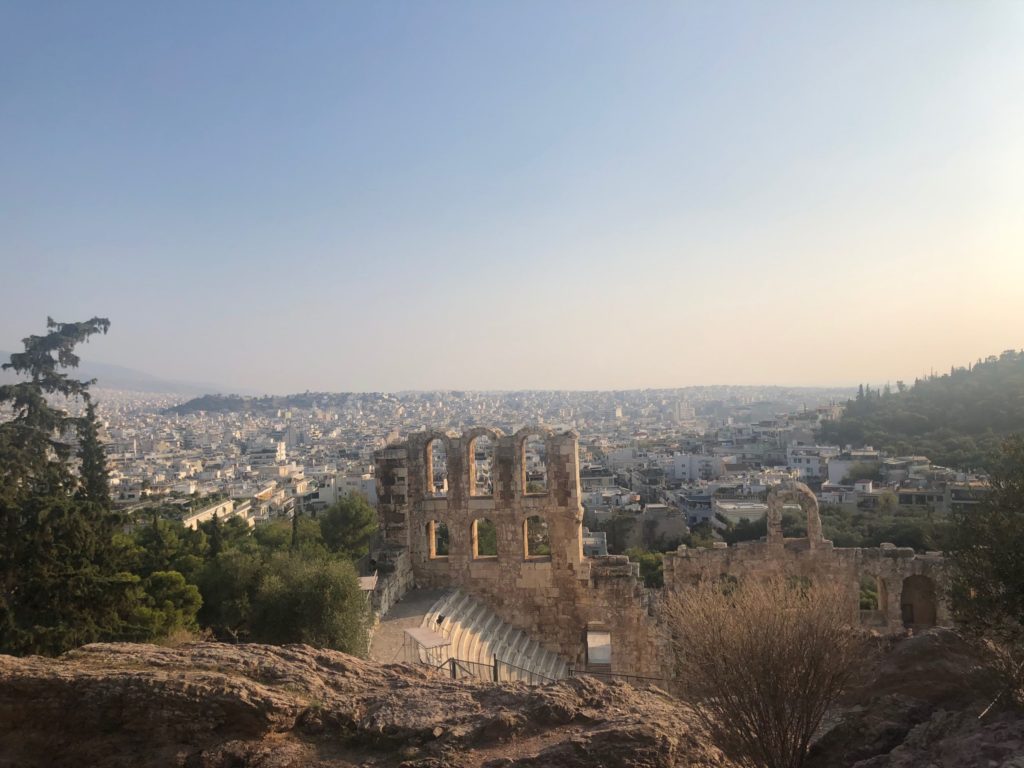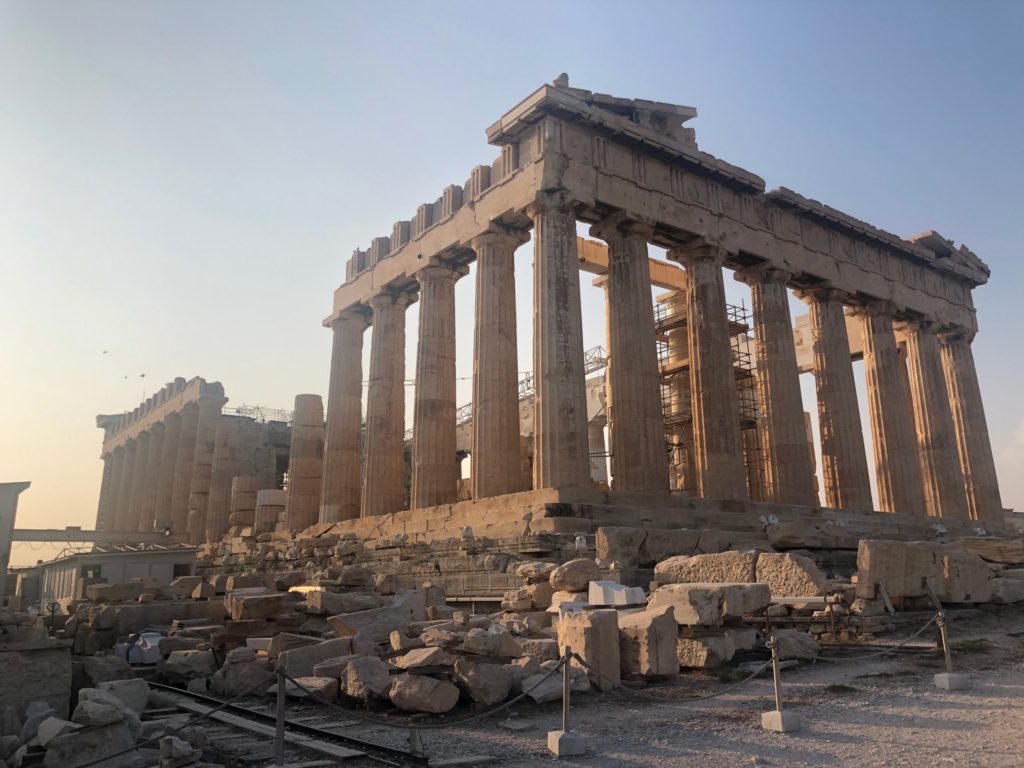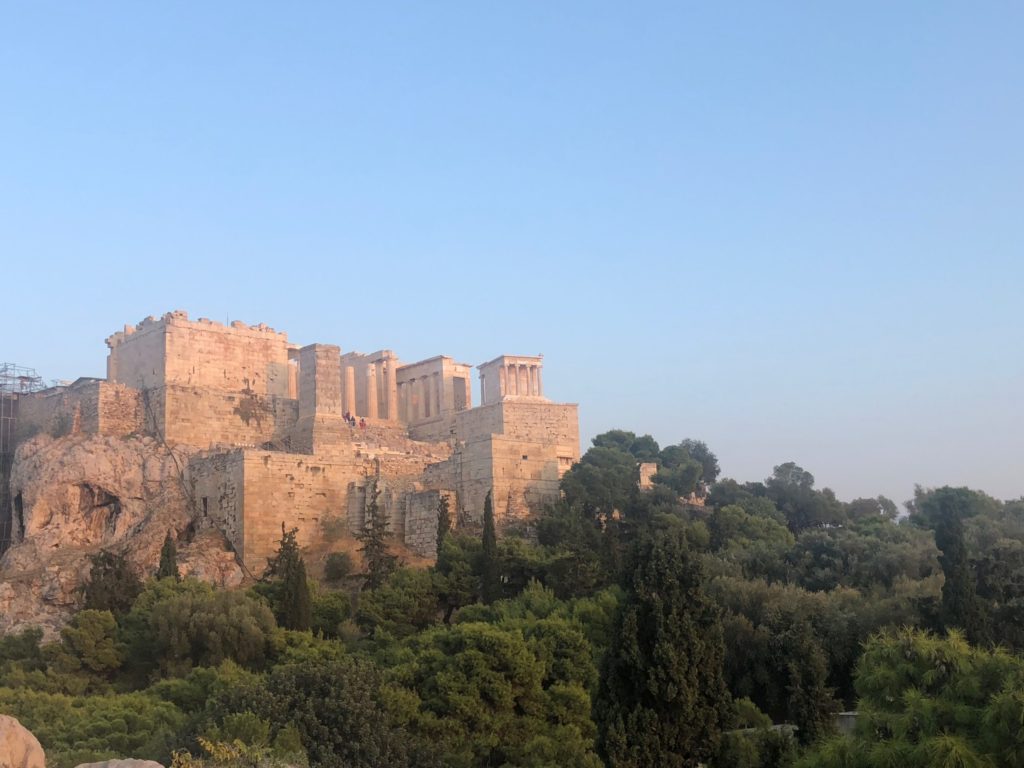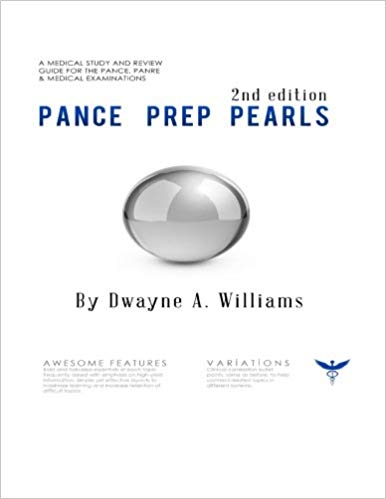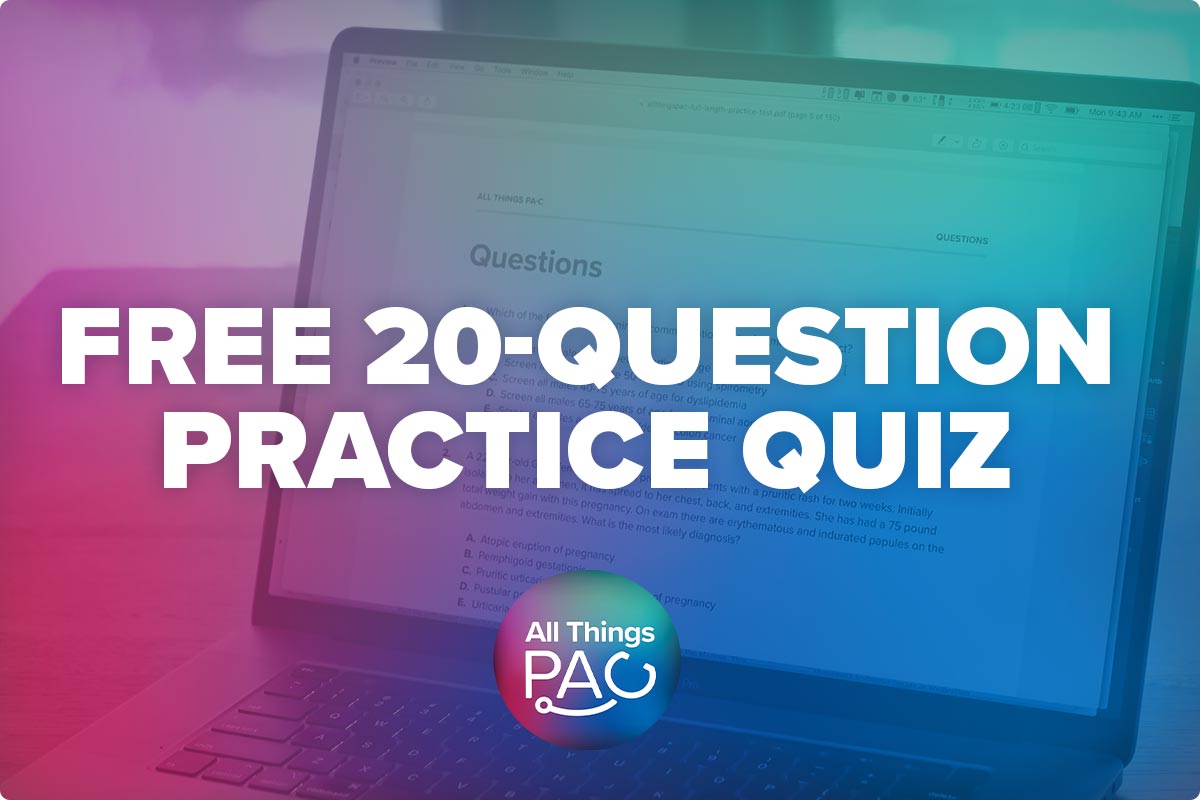Planning a Medical Mission Trip
PANCE Points + QBank
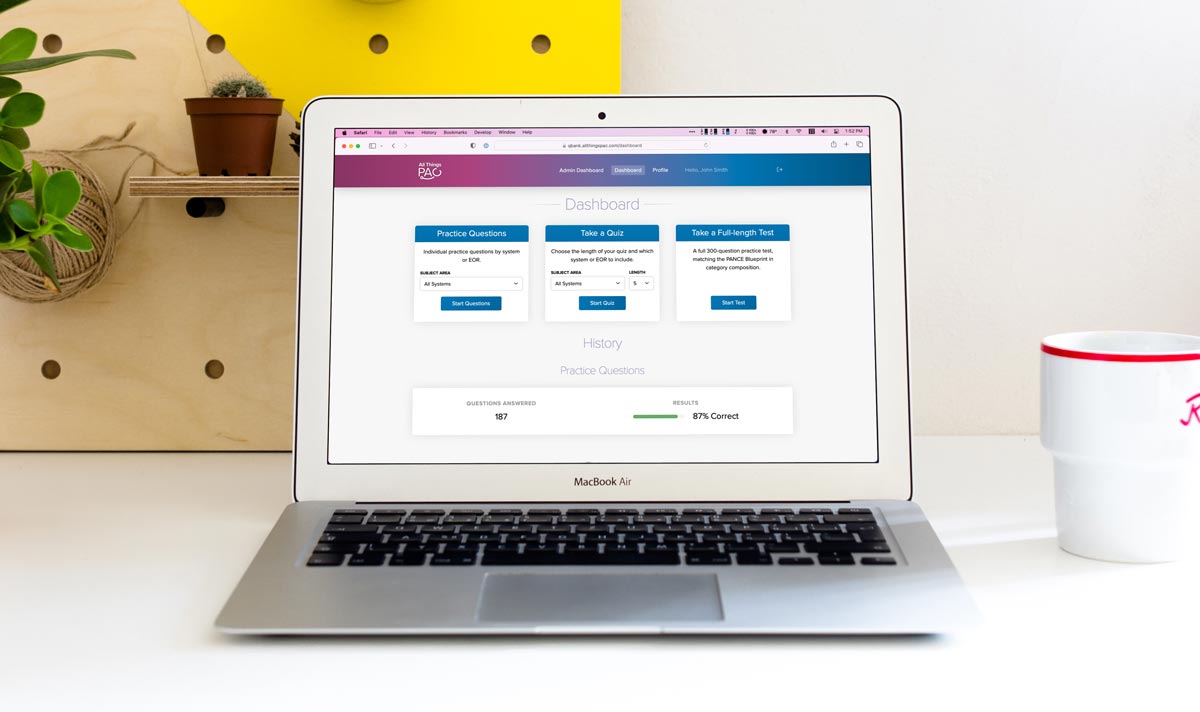
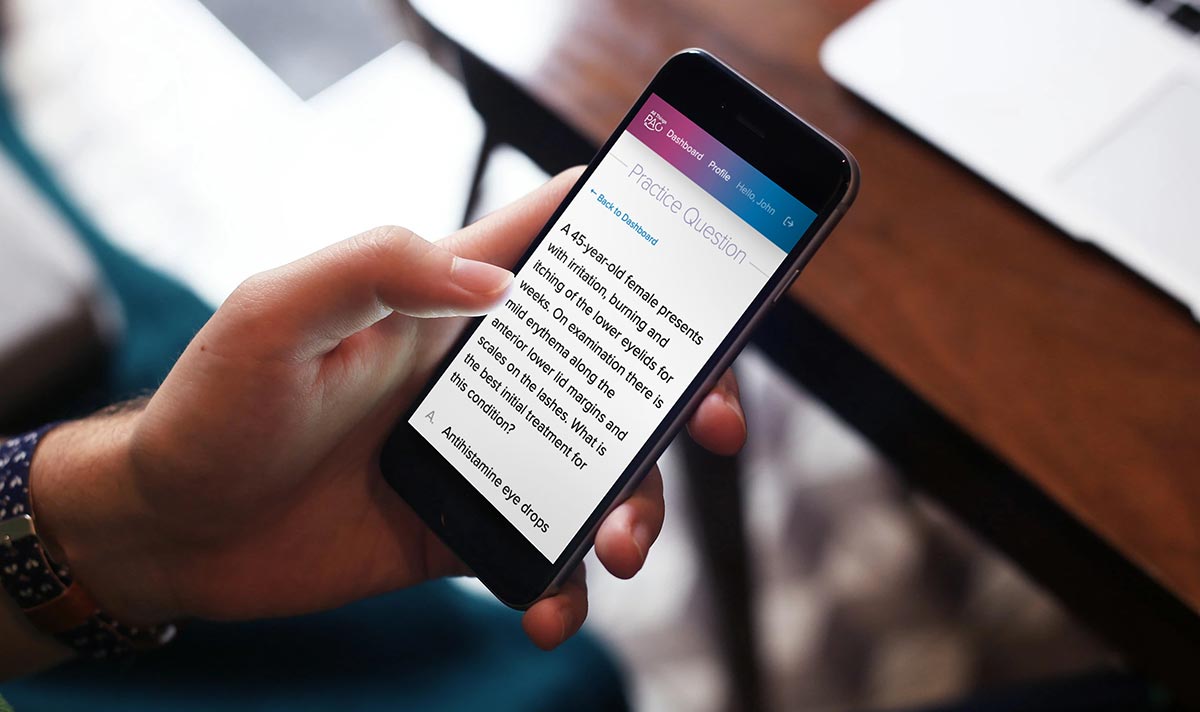
- 1,500+ questions written in the style & format of the PANCE exam
- Explanations for every answer to enhance learning
- Full-length practice tests following the PANCE blueprint
- Quizzes with choice of length & topic areas
- Individual practice questions with choice of topic areas
I’ve been on two medical mission trips. I was a PA student the first time and traveled with one of our PA professors to a Mexico border city and provided primary care for the poor in that community. The second one was in October 2019, where I traveled with a small team to provide care to Syrian and Middle Eastern refugees settled in and around Athens, Greece.
The first trip I was a participant. I wasn’t involved in the planning, and because I was a student, I didn’t work independently. I basically signed up, paid for the trip, showed up with my passport, and went along. It was an amazing experience and definitely placed on my heart the desire to do a medical mission trip again.
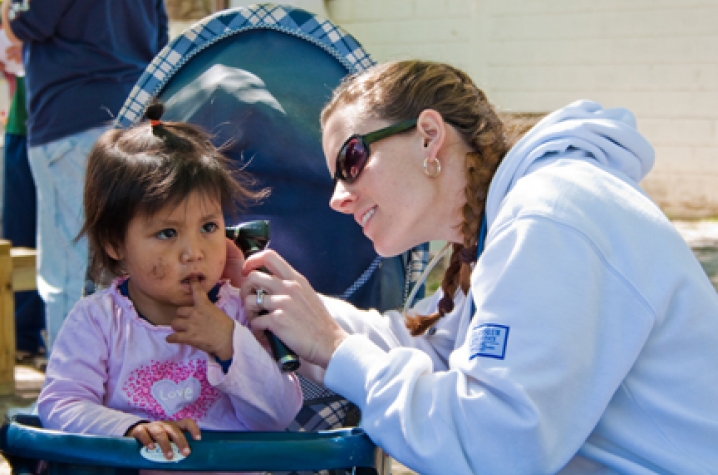
What followed for me, as it does for many new PA grads, is a lot of “life.” New jobs. Moving. Babies. More babies (4 in total). Over the last 8 years since graduating, there hasn’t been a lot of opportunities to pick up and leave my family for 10 days. But now that some of my kids are self-sustaining (to a degree), and my husband and I are more established in our careers, these doors are opening.
All that to say there are seasons for everything, and if medical mission or relief work is something you want to do, it’s ok to wait for the right time.

For the Greece trip, I was the medical lead and in charge of planning the entire trip. If you know me, I’m not a detail-oriented person. I more of a big-picture kind of girl. A visionary if you will. So planning an international medical trip was WAY out of my comfort zone. As in, I didn’t know where to start.
How does a medical license work overseas? Is a PA recognized as a provider in Greece? Do we need malpractice insurance? How to you buy medications? How do you bring medications across borders?
I didn’t have a lot of resources and had to figure it out. But somehow It all came together. We took a team of 10; 1 physician, 2 PAs, a PT, 2 nurses, a lab tech, and 4 non-medical people across the world to extend care to those who needed it.
I received so many questions about how I was able to do this. Because there were so many, I’ll share my experience in two parts. I’ll speak more to the planning in this piece and more specifics about the actual trip in Part 2. Finally, I’ll post a summary Q&A post as part 3.
PLANNING THE TRIP
This particular trip was through my church. I’m a member of a nondenominational church of about 4,000, who sponsors several global mission trips yearly. They had not done a medical mission trip for some time, so I was approached about leading one. As I stated before, the timing felt right so I agreed. Especially since the cause was something that had been weighing on my heart for a long time.
Side note, I distinctly remember sitting in a lecture during PA school one day and reading about the new Arab Spring spreading across the Middle East (I know, I should have been paying attention to the lecture). For some reason, it stuck with me and I began to follow the tragic events that would take place in Syria over the next decade. But it all started back in PA school for me… little did I know I would eventually lead a medical trip related to this very issue.
Back to planning.
I was given a contact name of someone who had taken several US medical mission teams to Isreal, Jordan, Greece and Turkey where a large number of Syrian and Middle Eastern refugees have fled and settled over the last 10 years. If you’re not familiar with the Syrian refugee crisis, I recommend you read about it. It’s considered one of the worst humanitarian crises of our time. The city of Athens sees about 1000 refugees a week coming and they need resources, including medical care.
The previous groups my contact worked with were mostly through Global Health Outreach (GHO). I’ll stop here for a minute and make clear this is a Christian organization, and obviously going through my Church was part of a Christian mission as well. My church has two priorities when it comes to missions: Church planting among the least reached and social justice among the most vulnerable.
These issues are dear to my heart as well. My faith is a huge part of my life and one of the driving reasons for me to want to do missions. With that being said, my goal is 100% to serve and love people, not to promote an agenda.
So, if a faith-based organization is not your thing, there are MANY other opportunities out there. I would start by searching on the Physician Assistants for Global Health website.
Back to planning.
GHO had previously taken several teams to Greece so I was able to ask them a lot of questions about planning. But primary what I had to do was
- Build a team of medical and nonmedical professionals
- Determine the goals and objectives of the trip
- Make a budget and assist team members with fundraising strategies
- Lead my team in several formation meeting (a pre-trip meeting where we discuss objectives and prepare mentally and spiritually for the trip)
- Determine the necessary supplies and medications to bring
- Order said supplies and medications
- Determine necessary credentialing
Medications
In our case, we were aware of the number of patients we’d likely see in a day based on how many providers we were bringing, and what type of ailments they would have.
I used the formulary GHO had used and scaled it down to the number of patients my team would likely see. This was still a challenge- trying to figure out what medications to bring. Ultimately it was a large supply of over the counter analgesics, over the counter relief medications, steroid creams, antifungals, antihelmetics, and antibiotics.
We took a modest supply of chronic medications like antihypertensives and diabetes medications, but as you can imagine trying to manage these diseases at a short term acute clinic is not the best. But, we were able to fill some medications for people who were out.
I took a lot of notes while I was there on what we used and didn’t use. In retrospect, I wish we would have brought more acute medications such as cough and cold medicines. I also wish we would have brought enough iron supplements and vitamins to give everyone (we ran out around day 2). We had quite a few antibiotics leftover but packaged them up and left them for the next team. I did take a few vials of Rocephin and we used those for a one or two sick folks we saw. We took one laceration tray and a few procedure supplies, but not much. We ended up using them to do a toenail removal.
If you’re planning a trip and don’t know what to take, I would strongly suggest working with someone who has done a similar trip and using their formulary. Have your team look over it and make sure it’s medications they’re familiar and comfortable with. I also suggest connecting with a local pharmacist in that region. Some of the medications are much cheaper outside of the U.S. and you may be able to order or get supplies once you arrive.
Credentialing
The credentialing process was the most challenging for me. The reason being, there really wasn’t a process and I couldn’t wrap my mind around that. Long story short, people don’t really care about the poor and marginalized. At least in our case, traveling to Greece, there was no formal process to get approval to practice medicine.
We took copies of our licenses to have on hand. We had copies of the formulary and proof of purchase for the medications, and we had notarized letters from the church hosting the clinic stating we were coming to provide humanitarian relief. That was it. And we didn’t end up having to show it to anyone.
Insurance
Several people asked me about liability insurance. That was a concern of ours. I did some research and asked the previous teams who went and other groups who do short term humanitarian trips, and all agreed that malpractice insurance isn’t necessary.
Again, at the root of this, I think it’s because no one really cares about these people. Who cares if they receive bad care or have a bad outcome? I do think being from the U.S. we’re probably a little skewed on this topic because of how litigious our culture is when it comes to medicine.
I did end up finding a group that sells short term medical liability insurance for trips such as these, and to put the providers on my team at ease we purchased policies. They were dirt cheap, about $5 a day so I figured why not, you just never know.
Fundraising
I was fortunate to have someone helping me with logistics like travel arrangements, flights, hotels, so I didn’t have to manage that.
The entire trip costs about $3500 per person. Included in this were travel expenses, food expenses, medication and supply costs, a donation to the church in Athens that provides services and hosts the clinic, and a little to do some tourist activities. Our team had great success with fundraising a lot of this.
The primary source of fundraising was writing letters and personally reaching out to friends and family telling them about the trip. Many people will never hop on a plane, or maybe don’t have skills that are needed, to do something like this. But they still want to help with the cause. By giving money, they feel invested. We had some team members raise above and beyond this amount, which all went to support the medical clinic.

If you’re thinking about organizing a medical mission trip, I hope you find this helpful. It’s just skimming the surface but outlines the big tasks. I suggest that you not reinvent the wheel. Usually, people who have organized mission trips are happy to help. Find an established organization and build off what they’re already doing.
If you just want to go on a medical mission trip, and not organize one, then check out GHO or PAGH, or any number of organizations who are already in the trenches doing the work. Again, there’s no reason to reinvent the wheel and usually, these organizations are careful about who they partner with to provide quality and sustainable care where they go.
Lastly, understand you don’t have to fly halfway across the world to do this. I guarantee your local community has a need for low costs or free medical care. Perhaps there’s a low-income clinic that needs volunteer providers. Maybe you could start a program to provide medications or health education to those in need.
I do encourage you to find some way to give back. I don’t want to speak for everyone, but as a PA I don’t want for much. I have a decent income, a stable profession, and a wealth of knowledge. I feel that I have some responsibility to give back, and I hope others feel that way too.
Stay tuned for Part 2 where I will share more specifics about our experience in the clinic.

Students use numerous study techniques in hopes of absorbing a significant amount of information in a short period of time. Ideally, they retain this information for the long haul to apply clinically and practically in the real world.
But not all study techniques are created equal. One study looked at 10 commonly used study techniques. These included summarization, highlighting, keyword mnemonic, practice testing, imagery use for text learning, rereading, distributed practice, elaborative interrogation, self-explanation and interleaved practice.
They found practice testing and distributed practice were the most effective. Distributed practice, which is studying over multiple sessions instead of cramming everything in the night before, not surprisingly resulted in better long-term knowledge retention.
The study also found that practice testing with feedback is better than practice test alone.
Again, none of this sounds shocking but many students in PA school are hard-pressed for time and responsible for an exorbitant amount of information. That’s why one of my focuses with All Things PA-C is to provide practice test questions for students to incorporate in their studies.
So how do we create good, quality practice questions conducive to learning?
The PANCE and PANRE exams are multiple choice, so it obviously makes since that practice questions should be too.
Multiple choice questions can be used not only to test knowledge but to facilitate learning. One fascinating study showed how well-designed test questions enhanced recall of information. However, a poorly worded question can have the opposite effect.
Questions should be simple. Answer choices like “A and B but not C” are not as conducive to learning. You spend more energy trying to break down the question format than recalling correct information.
“All of the above” and “None of the above” are also not optimal. With “none of the above” you’re not recalling correct information.
Questions, as much as possible, should be “real world” centered. For example, knowing the difference between how two disease states would present might be asked “which symptom favors COPD versus heart failure?”
Or you’re given a symptoms and must come up with the diagnosis. “An elderly patient presents with progressively worsening shortness of breath and a pansystolic murmur. What is the most likely diagnosis?” Questions like this allow you to apply the knowledge in a real world setting.
Questions should offer a few responses that are reasonable choices with one being the “most correct.” Too many “close” answers make the question confusing and you’re not as likely to learn. As most questions on the PANCE have 5 answer choices, a format I like to use is one “most correct” choice, two plausible choices, one incorrect option, and one that is definitely wrong or potentially harmful. This can be especially helpful if you read the explanations behind why which answer is correct or incorrect. You glean as much from the wrong answers as you do the correct ones.
A test shouldn’t be too difficult. Answering too many questions incorrectly can increase the memory of wrong information. This doesn’t mean make the test easy, a test should judge how well takers know the material. If the majority of students miss a question, it’s probably a bad question. There’s an entire detailed process for determining the appropriate number of correct answers to pass the PANCE. And although no one that I know of would call the test easy, a large majority of first-time takers will pass.
Butler AC. Multiple-Choice Testing in Education: Are the Best Practices for Assessment Also Good for Learning? Journal of Applied Research in Memory and Cognition. 2018;7(3):323-331. doi:10.1016/j.jarmac.2018.07.002.
Dunlosky J, Rawson KA, Marsh EJ, Nathan MJ, Willingham DT. Improving Students’ Learning With Effective Learning Techniques. Psychological Science in the Public Interest. 2013;14(1):4-58. doi:10.1177/1529100612453266.
Studying for the PANCE or PANRE requires a lot of self-study and independent learning. For both students and practicing physician assistants, time is extremely valuable. Having the best PANCE and PANRE prep books to guide and maximize your time is extremely important.
As a student, you’re already studying for your end of rotation exams. following the NCCPA Blueprint for whatever specialty you’re in while also spending some time on general questions allows you to maximize your time studying. There’s no reason not to kill two birds with one stone.
As a practicing PA, there’s a good chance you have other obligations like family. If you’re like 80% of practicing physician assistants, you’re also in a specialty. As of now, the PANRE is still a general test so maximizing your study time to focus on your weak areas is extremely important.
I recommend a good mix of Blueprint-focused outlined material as well practice test questions. For the first-time PANCE taker and the seasoned PANRE applicant, it’s important to understand and know concepts, but also how to answer questions.
I had several very intelligent classmates who did not pass the PANCE, not because they weren’t smart enough, but because they weren’t good “test takers.” There’s some skill behind answering multiple choice standardized questions.
The strategy behind multiple choice questions is usually to give
- The correct answer
- An “almost correct” answers
- An answer that is related to the question base but not correct
- An answer that is wrong and potentially harmful
So even if you don’t know the answer, you can attack the question strategically to narrow down the choices and make an educated guess. This takes practice and can significantly improve your scores. It takes “guessing” out of most of the questions you don’t know.
There are many great resources available that include reading material and practice questions. Studying for the PANCE or PANRE is all about maximizing your time. YOU DON’T NEED EVERY RESOURCE AVAILABLE. Pick one or two that complement your natural study method whether that’s outline form, studying by system, or by symptoms. Make sure you have plenty of practice questions. Good luck!
Here are 5 great resources available to help you through your self-study.
A Comprehensive Review for the Certification and Recertification Examinations for Physician Assistants

This is the only resource developed and endorsed by the American Academy of PAs (AAPA) and the Physician Assistant Education Association (PAEA). This is the resource I personally used for studying. I utilized it for the PANCE and my first PANRE.
While it does have a nice question bank of approximately 200 questions with answers and explanations, the well-written content is why it’s such a great research. Following the Blueprint, each chapter focuses on a body system and outlines in a concise, easy to read format everything you need to know.
Purchase of the book also includes online access to additional questions and a self-assessment CME post-test for 20 Category 1 self-assessment CME credits.
LANGE Q&A Physician Assistant Examination, Seventh Edition (Lange Q&A Allied Health)

This is the resource I recommend for practice test questions because there are so many. You’d be surprised how fast you memorize few hundred questions that come with some of these review books. And while they’re helpful, once you’ve run through them a few times you know the answers.
Lange Q&A has over 1,300 exam-style questions with answers and explanations. The questions are organized by organ systems and specialty areas which is helpful for students studying for end of rotation exams or if you’ve pinpointed a particular area of weakness.
Purchase of this book comes with online access to a free practice test as well.
Davis’s PA Exam Review: Focused Review for the PANCE and PANRE

The format is a question, followed by several correct answers. This is followed by a detailed explanation of why each answer is correct or not correct and what you should know about both the question stem and the answer choices. This allows you to extensively cover the subject matter and different ways the question could be asked.
Another popular study guide, this is a good option if you’re looking for a one-stop-shop clinical review with ample study questions. The format is also a little different, grouped by signs and symptoms instead of categories and systems like most others. This is a creative approach because most PANCE and PANRE exam questions give you a clinical scenario.
This review is divided in two sections. The first “Essentials” section details clinical topics by signs and symptoms. There are questions and detailed explanations throughout. The second “Performance” section is supposed to simulate the exam experience.
Pance Prep Pearls 2nd Edition
Pearls are an effective way to study large quantities of information. They’re light in the quantity and heavy on the quality. Pance Prep Pearls offers succinct information for Blueprint content as well as easy to follow algorithms and charts to maximize how much you retain.
Be aware, there are numerous reports of fake copies of this book being sold on Amazon. Your best option is to buy directly from the publisher.
PANCE and PANRE Question Book: A Comprehensive Question and Answer Study Review Book for the Physician Assistant National Certification and Recertification Exam

Written by the same author as PANCE Pance Prep Pearls, this book is a great adjunct for additional test question. Practice tests come at a price. A 50 question practice test from NCCPA is $50. This has over 600 additional questions with detailed explanations for each answer. While not categorized by system or subject, it’s a nice sized question bank to keep you busy. I recommend purchasing this with PANCE Prep Pearls.

Completing the 100 required continuing medical education (CME) hours every two years to maintain your physician assistant license can seem like a daunting task. It helps to know some of the best places for free physician assistant CME.
This is especially true if your employer doesn’t provide a stipend. Even if you have an allowance, airfare, hotels and conference fees can run in the thousands of dollars. If you do attend a large conference, you may still only earn a fraction of the CME required.
There are many resources available that offer free continuing medical education, most of them approved for Category 1 CME Credit ™ , which NCCPA recognizes for PAs. With most of these programs listed you can search by specialties, clinical topics, or even profession such as programs specific to PAs.
Depending on your preference, you can choose between print, audio or even video mediums on most of these sites. Whatever your preference is, doing a few free continuing education hours a month will help keep you on track. No one wants to be scrambling in December when their NCCPA license renewal is due.
These free CME sources can supplement your hours or be your sole source of continuing medical education if that’s what you’re looking for. Most require nothing more than registering with their site.
Doximity
Doximity provides more than free CME. You get a custom news feed of articles personalized for you. You can search for articles that match your interest. They have free medical education hours accredited for physicians, nurse practitioners, and physician assistants. While the resources are free, registration is required.
MedScape
Medscape has accredited courses covering over 1000 clinical topics. You can read unlimited articles, expert perspectives, FDA announcements, conference news and practice guidelines across over 30 specialties. All activities are certified for AMA PRA Category 1 Credit ™ which is recognized by the NCCPA.
ReachMD
ReachMD also provides free online CME. If your preference a variety of mediums such as audio and video, they are a great resource. Their content is not only web-based and mobile app friendly, but they also stream 24/7 on ReachMD, iHeartRadio, and iTunes digital platforms. Content is Category 1 CME.
Up To Date
The first time I heard Up To Date tracks your usage, which you can then apply as CME time I died a little inside. I spent hours on Up To Date in my first few years of practice! This is a fantastic resource if your organization provides you a subscription to Up To Date. Subscribers with an individual or EMR/system subscription can earn CME each time a clinical question is researched. UpToDate tracks the search activity and the time spent reading the topics. You can select AMA PRA Category 1 Credit ™ or log hours reading for Category 2.
FreeCME.com
FreeCME.com is another online database of courses offering accredited hours at no cost. There is no news feed but their website is simple and easy to navigate. You can search by specialties, clinical topics, professions, credit type, and different media formats.
MyCME.com
If you aren’t already receiving The Clinical Advisor, a free clinical publication for nurse practitioners and physician assistants, you should sign up! Free CME is offered monthly and available on MyCME.com. Dozens of other courses are available to search by specialty or topic. They also create Small Bites, where you can earn CME through short 15-30 minute courses.
Pri-med.com
Pri-med host multiple live conferences around the country for extremely affordable rates as far as conferences go (around $50/day for 1-3 day conferences). They also have many free CME courses on their website. Their database is simple and easy to search.
Grand Rounds
It’s likely your local hospital offers grand rounds regularly. These typically provide AMA Category 1 Credit ™ . This is also a chance to interact with your colleagues. Many hosts now allow you to call in and attend virtually for the same credit.
State Medical Associations
There’s a good chance your state medical association offers free CME. They especially do this when new laws are enacted or education for licensure is required. For example in my state, practitioners are now required to do 2 continuing education hours on opioid prescribing and abuse, so a free webinar is available. I frequently see free CME as well on infectious disease topics when there are new outbreaks.
CME doesn’t have to break the bank. You can spend a fortune going to conferences. If it’s on your employer’s dollar, great. But if you work part-time, or your organization doesn’t cover the cost of continuing education, try one of these resources. Don’t forget to log your CME on NCCPAs site as you go so that it’s nice and organized for you when it’s time to submit.

The short answer to this question is 350. A score of 350 certifies you are knowledgeable and able to safely and effectively practice as a Physician Assistant. But what does this score actually mean? Where does this number come from? What is a passing PANCE ™ score in practical terms? We’ll lay it out for you today.
Standardized test development
The PANCE is a standardized test. Standardized tests use statistical analysis in both test development and scoring. The PANCE is no exception.
For a standardized test, strict specifications ensure each test is similar in difficulty. But, unless all tests are identical, it’s impossible to exclude some variability in the difficulty of individual questions.
For this reason, a scaled-score method is used. This limits the variability in difficulty across different tests. For example, someone scoring 50% on a difficult exam may score 80% on an easy exam. A process must be used to account for this variability.
A scaled score creates a standard range for test-takers and allows a fair comparison of results between different tests. It creates fairness among test takers given different questions on different days. No system is perfect, but most standardized tests use a standard-setting method.
The Angoff Method
The NCCPA uses the Angoff Method as their standard-setting approach. The Angoff Method is a system where field experts, called subject-matter experts (SMEs), examine each test question. These SMEs predict how many questions a minimally-qualified candidate, or in our case a new PA graduate, should be able to answer correctly. Each question is given a score based on these results.
For example, a question rated 0.50 means 50% of minimally-qualified candidates would answer it correctly. A question rated 0.90 means 90% would be able to, implying a much easier question.
After the SMEs individually rate the question, they review them a second time. Often this part of the process is done together as a group. A consensus is made about the rating for each question. This rating is called its predicted difficulty.
The predicted difficulty for all the questions is totaled, then divided by the number of questions. This value is called a cut score, or score required to pass.
Example
Here’s an example of how this likely plays out in developing a passing score for the PANCE.
A panel of physician assistant content experts with experience and knowledge about what a new grad should know is formed. This might include PA faculty or practicing PAs. Non-PAs with expertise in our field may participate as well. All we know is they are content experts on the knowledge, skills, and abilities of entry-level physician assistants.
These panelists individually review the test questions and determine whether a new PA graduate should be able to answer the question correctly. Once this is finished, everyone on the panel reviews the ratings of the other members and compares their ratings. They come to a conclusion and assign a predicted difficulty for each question.
The ratings are then totaled, and divided by the number of questions to get the passing score. For the PANCE, it’s 350.
Other scores you may see on your score report
Reference Groups
Reference groups compare a first-test taker’s scores to others taking the exam for the first time. This gives you a sense of how you compare to your peers. The sample size includes all first-time test takers over the previous two years.
Standard error of measurement
The standard error of measurement, or SEM, gives you a range you should be able to score if you took the test again without studying. A smaller SEM indicates you’re likely to achieve a similar score if you took the test again.
Subscores
Subscores tell you how well you performed in each area of content. Bigger content areas such as cardiovascular or pulmonary have more questions. This makes their SEM scores typically smaller.
If there are 40 cardiology questions and you miss 3, you likely know the content very well. If there are 5 hematology questions and you miss 3, your subscore will indicate you don’t know the content well. But, it may not be accurate. What if the difficulty level of those questions was high? More questions decrease the variability of scores.
The bottom line is the subscores can be helpful or interesting to look at, but may not accurately reflect your knowledge.
Passing the PANCE
When it comes down to it, passing the PANCE requires you to know the blueprint content at a level expected of a new graduate. You are not expected to score perfectly. The test takers aren’t out to make you fail. Understanding major systems, concepts, diagnosis, and common disease management will help you achieve a passing score.

